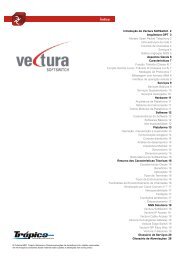You also want an ePaper? Increase the reach of your titles
YUMPU automatically turns print PDFs into web optimized ePapers that Google loves.
44IntroductionThe Reconstruction <strong>of</strong> Pro to-In do-European 45recognizeab1e in the PIE *bher-e-ti 'he carries', cf. F 203 § I with LIV typeIn).5) A clear example, parallel to the Vedic as-, is the Vedic appears in place <strong>of</strong> i.8) Observations regarding the endings <strong>of</strong> the as- and . paradigms: The Isg. -m-I, the 2 sg. -s-i, the 3 sg. -I-i and the 3 pi. -anl-i end with -I, as opposedto the I pI. -mtis and the 2"" person plural -IM, where there is no -i. One mustadd, however, that the I pI. -mas-i exists in Vedic as a later variant. Theseendings are indicative <strong>of</strong> the present tense and are referred to as 'primary endings.'See below § 11.Although not all <strong>of</strong> the twelve forms <strong>of</strong> bhar- are attested, they aresafely deducible: Macdonell Vedic Grammar 1910 p. 319 ff. ; concerningthe verb: Gota 1. Priisensklasse 1987 p. 225 ff.; on the thematicvowel -a- / -a- « PIE *-e- / *-0-), see below, F 101 § 4.11) The contrast between present and non-present is established throughtwo different formal means: On tbe one hand through the augment, which isplaced before the verb stem in the past tense (for more information, see below,F 213), on the other hand through the two series <strong>of</strong> endings: primary endingsfor the present, and the secondary endings fur the non-present. In the I", 2"",and 3'" singular and 3'" plural, the presence or absence <strong>of</strong> -i differentiates thetwo series, whereas in the I" and 2"" person singular, the endings -mas( -I) vs.-ma and -Iha vs. -Ia(na), which differ from one another only slightly, perfonnthis task. In place <strong>of</strong> -nl-i : *-nt, in the 3'" person plural, the later -nli: -n isfound (with simplification <strong>of</strong> -nl to -n in word-final position).12) The Vedic imperfect forms <strong>of</strong> as- (for information on tbe status <strong>of</strong> researchon attestations: Gota Malerialien Nr. 3 1990 under appropriatebeading; the Vedic verb forms are only given accents wben they are attested inaccented form; the verb in the main clause, as is generally known, nonna11ycarries no accent; for further information, see below F 211):





